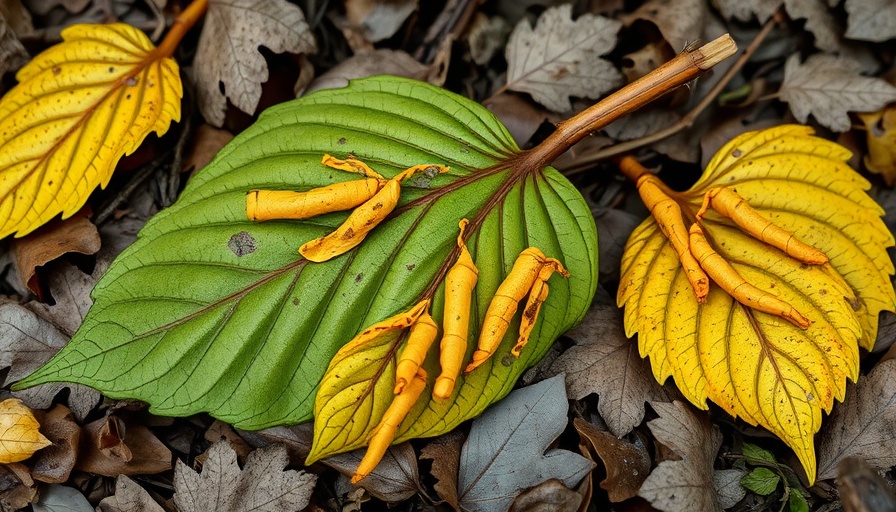
The Tranquil Beauty of Hostas: Why They Matter
Hostas are a beloved choice for many gardens, popular not just for their vibrant colors but also for their ability to thrive in shady spots. As an urban or suburban homeowner, bringing life into your garden can create a peaceful retreat in your outdoor spaces. These perennial plants offer a lush focal point and can foster deeper community connections with fellow green thumbs. Understanding how to nurture these plants while managing potential diseases empowers you in your gardening journey.
Spotting Common Hosta Diseases
Despite their resilience, hostas are not immune to all ailments. While most gardeners might expect a few hiccups along the way, knowing what to look for can save your plants—and your peace of mind.
Here are the 7 common hosta diseases you may encounter:
- Anthracnose
- Bacterial Soft Rot
- Cercospora Leaf Spot
- Fusarium Rot
- Petiole Rot
- Phytophthora Foliage Blight
- Viruses
Understanding the Climate Impact on Hostas
Gardeners should be aware that hostas are particularly susceptible to diseases when they are stressed due to extreme temperatures. Hostas thrive best when planted in shaded, humid areas where they can avoid the harshest summer sun. On hot days, these plants might go dormant, leading to increased vulnerability to diseases. Just as important as recognizing the signs of disease is ensuring your plants are in their optimal growing conditions. This means regular watering, appropriate mulch to retain moisture, and protection during heatwaves.
The Role of Pests: More Than Meets the Eye
It’s critical to understand that sometimes, what looks like a disease isn’t a disease at all; it could be a pest problem. For instance, voles, small burrowing rodents, can munch on roots, causing wilting and poor plant health aboveground. Be sure to inspect the roots for gnaw marks, which may be misleadingly interpreted as a disease.
Tackling Anthracnose: Steps for Recovery
Among the issues mentioned, anthracnose is one of the most common diseases affecting hostas. This fungal infection can create dark spots with black edges on leaves. While anthracnose won’t usually kill your plants, it can be unsightly. If diagnosed correctly, you can treat it using a practical multi-step approach:
- Trim away all affected leaves.
- Apply a copper fungicide such as Bonide's product, available in various sizes for convenience.
- Ensure a repeat application weekly for a month or until you see improvement.
Empowering Yourself: Gardening Knowledge is Key
Arming yourself with the right knowledge about gardening can be the difference between a flourishing garden and a declining one. With an understanding of climate-friendly gardening techniques and pest-resistant plants, you can strategically mitigate risks of diseases. This know-how not only helps you take care of your hostas—it's applicable for growing vegetables, enhancing your overall gardening experience.
DIY Gardening Projects: Transform Your Space
Consider diving into DIY gardening projects that suit your style and embrace your surroundings. From building shading structures for your hostas to creating an organic compost system, these projects link you with the land and invite you to share your journey with others, especially in your local community.
Final Thoughts: Connect with Your Garden
Hostas grow as powerful symbols of resilience in your garden. By learning how to identify and manage common diseases, you cultivate a sense of confidence and self-sufficiency that can lead to an abundance in your garden. As you embrace these challenges, think of your garden not just as a space for plants but as a pathway towards personal discovery. Share your journey with fellow gardeners, enhancing community ties while expanding your knowledge.
 Add Row
Add Row  Add
Add 




 Add Row
Add Row  Add
Add 

Write A Comment